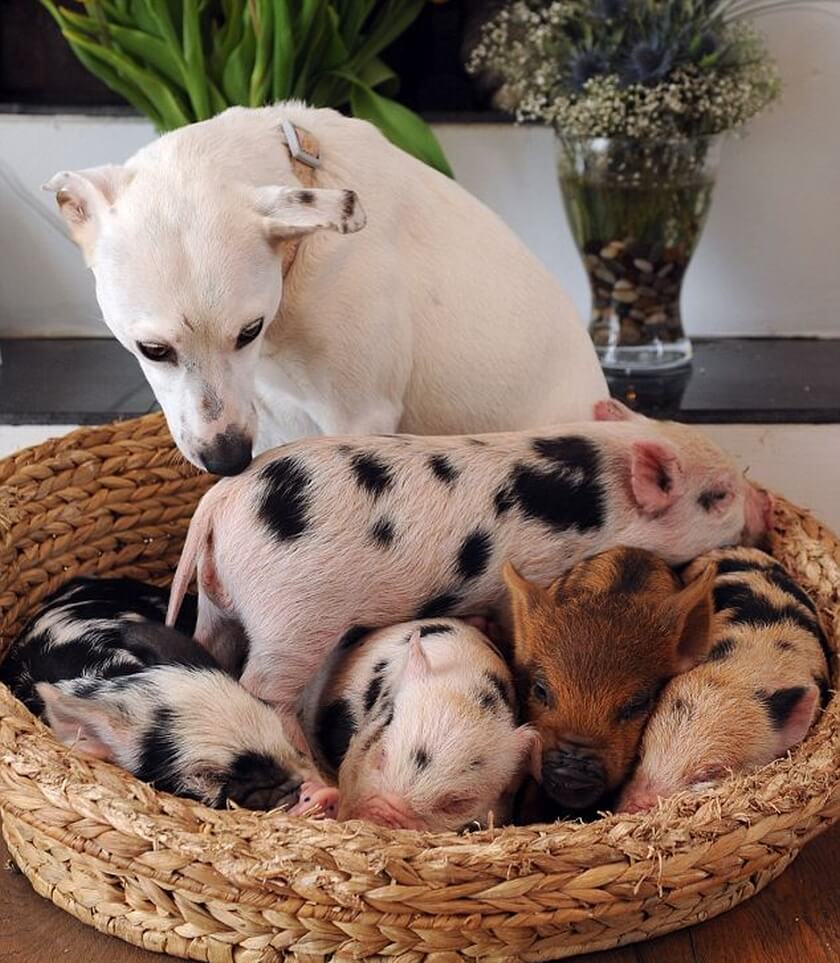When millions of baby piglets started dying at an astonishing rate from a deadly disease never before seen in America, farmers were frantic to find out how it started, but more importantly, how it could be stopped. Eventually, the disease was given a name: Porcine Epidemic Diarrhea virus (PEDv).
It was first diagnosed in the United States beginning in April 2013 and multiple investigations and studies were conducted in an attempt to answer questions about the epidemic; at the top of the list was how the virus arrived in the United States and whether there was risk of another.
The task fell to the U.S. Department of Agriculture (USDA) who, after two exhaustive years of research and analysis, were finally able to publish the results of their investigation.
The most likely suspect: A dirty old bag
The investigation revealed that the deadly disease was probably carried into the U.S. on giant tote bags used to ship bulk products from China. The tote bags, otherwise known as Flexible Intermediate Bulk Containers (FIBCs) carried, along with the virus, animal feed ingredients such as chicken jerky, pig ears, and other pet treats all originating from China.
Cozy home for a virus
The enormous tote bags designed to carry 1,000 to 3,000 pounds are frequently reused, resold and seldom, if ever, cleaned between uses. The giant bags, which can stay in circulation for up to two years before wearing out, possess the ideal environment to allow the virus the ability to survive for weeks within the bags’ protective weave thereby capable of spreading disease to everything that came in contact with them.
Pet treats for pigs
Perhaps the most frightening scenario considered for the transportation of the virus to the U.S. was in pet treats. In this scenario, they assumed that the treats were contaminated post-processing in China, and because the virus could not be killed by irradiation, would be processed in a pet food plants in the U.S.. And any scrap or salvage material from the treats would then be resold for swine rations through a vast network of feed mills and distributors who receive and transport feed to customers in the tote bags creating the likelihood of widespread cross-contamination:
“The most probable route of dissemination is in the context of recycled food or feed products through distribution companies who generally service a large network of feed mill customers across the Midwest and beyond,” according to the report.
Pet treats tested for virus
To test the theory of PEDv contaminated pet treats, in January 2015, FDA in collaboration with USDA began a pilot study to test pet treats from China to determine if they had been contaminated by PEDv. FDA tested approximately 40 jerky pet treats that had been archived in 2013. Although no virus was detected in the treats, there was also no virus detected in any of the 60 tote bags they tested.
Pig poop and other scary scenarios
As mentioned earlier, what was most surprising and shocking to me, were the details about the various scenarios for disease transmission that were considered, including the nauseating possibility that fertilizer, compost, or wastewater that could have contaminating the tote bags before they were shipped to the U.S.:
The bags could have been contaminated in an “origin country’s transport trucks, by exposure to irrigation or flood waters containing organic fertilizer like pig manure,” the report said.
Recycled homes for viruses
Certainly, the most putrid revelations was that, not only are the tote bags designed to be reused, but there is no protocol for cleaning or disinfecting them.
Unfortunately, it took the catastrophic outbreak of a deadly virus to prompt the USDA to recommend to companies to avoid reusing the bags, or figure out how to sanitize the disease carrying tote bags.
Dried on the side of the road
Another frightening scenario included looking at vitamin and mineral premixes, the majority of which are either produced in China, or use ingredients from China, in which the report suggested the possibility of contaminated rice hulls:
“Some products such as antibiotics are diluted in China with rice hulls. One consultant had seen rice hulls being dried on a roadside where they are likely driven over by contaminated pig trucks,” according to the report.
An unsettling future
Since the peak of the outbreak in 2014, new cases of PEDv have slowed, but not enough to allay fears of the virus returning. In early 2015, a new strain was identified by American researchers and signals the virus’ continued mutation.
Sadly, the disease has already spread from China and the U.S. to Europe, where cases have so far been identified in Germany, the Netherlands and Belgium. Further unconfirmed cases have been reported in Austria, Spain, Estonia and Romania.
Andrea Ladinig, doctor of veterinary medicine at the University of Veterinary Medicine in Vienna, worries that this problem is unavoidable as feed manufacturers rely on China as their only source for some feed ingredients:
“Feed bags are the likeliest culprit, but feed or feed ingredients could also be a risk. Some feed minerals, such as amino acids, come from China, but as there is no other source for these things farmers don’t have a choice,” said Dr. Ladinig.
Kansas State University’s Jason Woodworth who is studying the presence of the virus in animal feed, shares Dr. Ladinig’s concern, says:
“We have established that feed and feed ingredients may act as a vehicle to transfer the virus,” said Woodworth. “This is extremely important because feed and ingredients are not normally considered a vector in transmitting diseases.”
SOURCE: Swine Enteric Coronavirus Introduction to the United States: Root Cause Investigation Report, USDA APHIS


Comments (3) Write a comment